
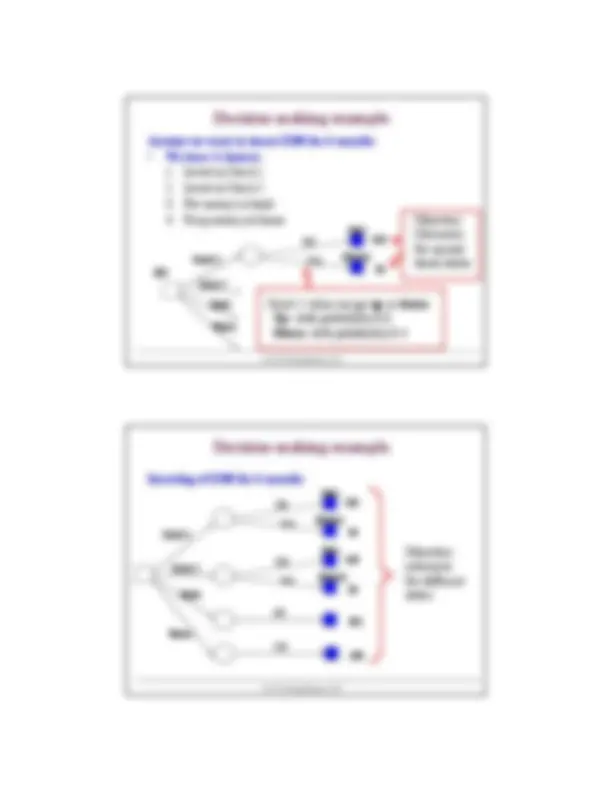
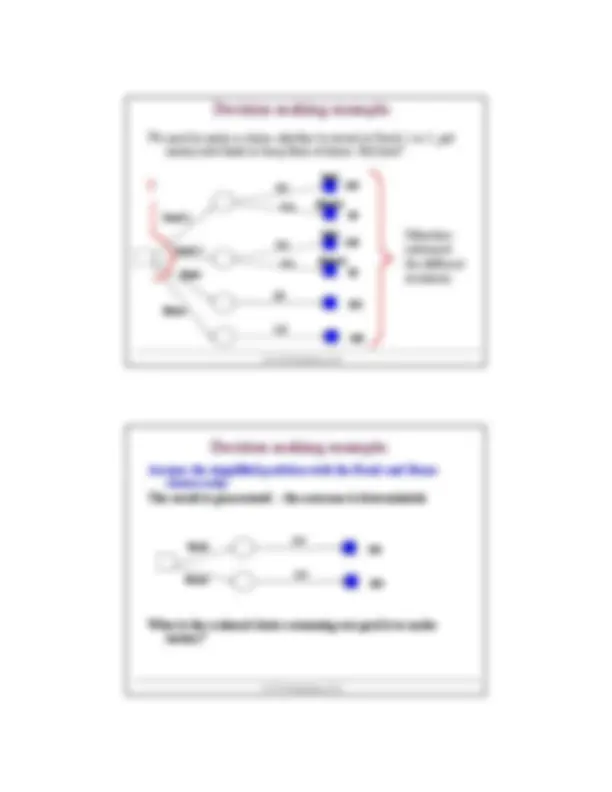
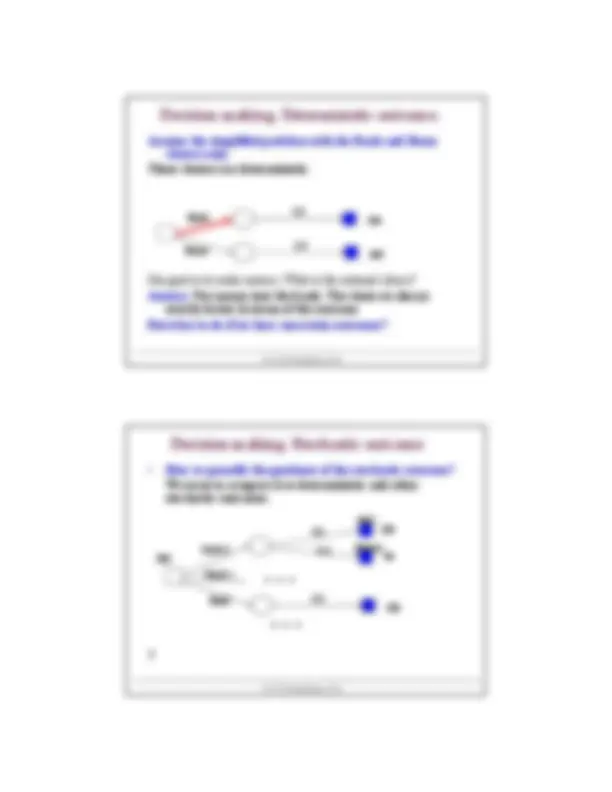
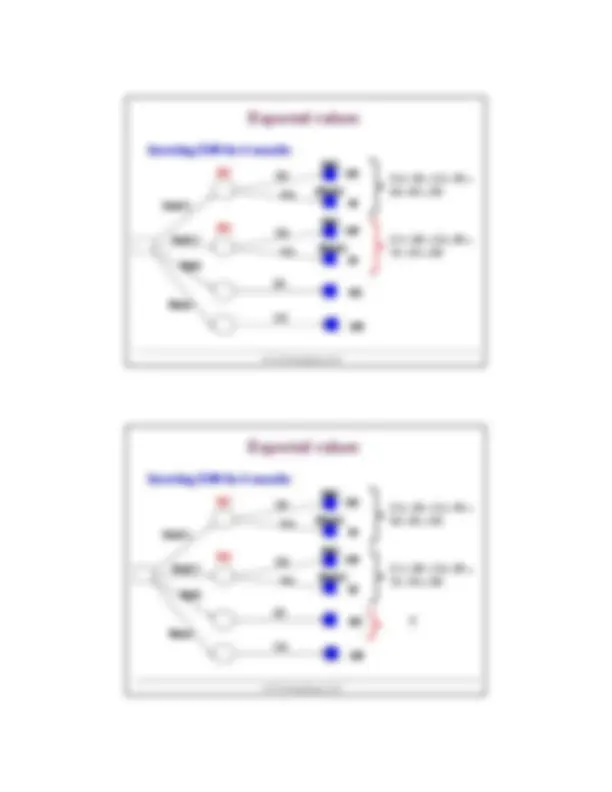
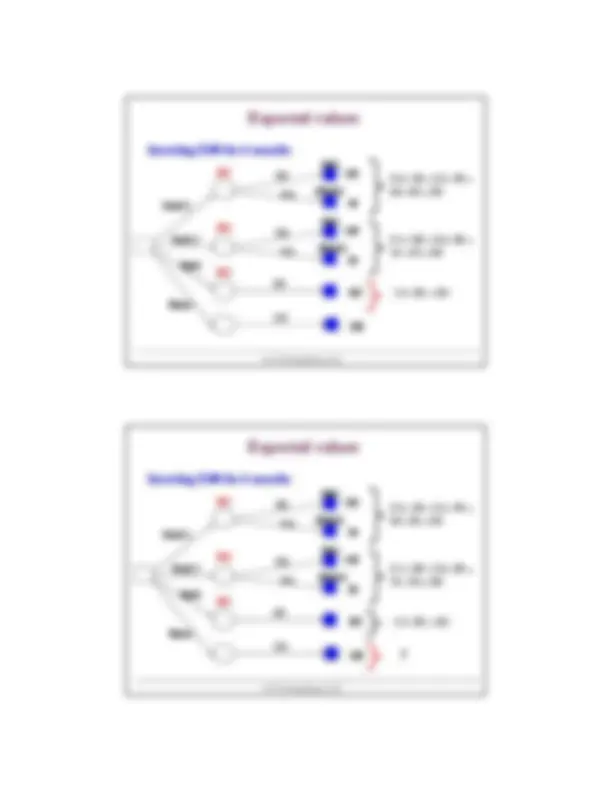
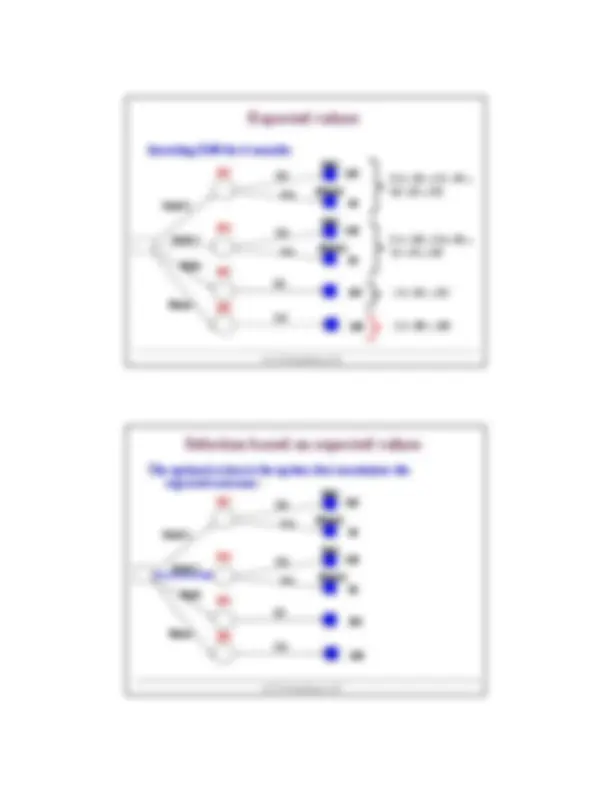
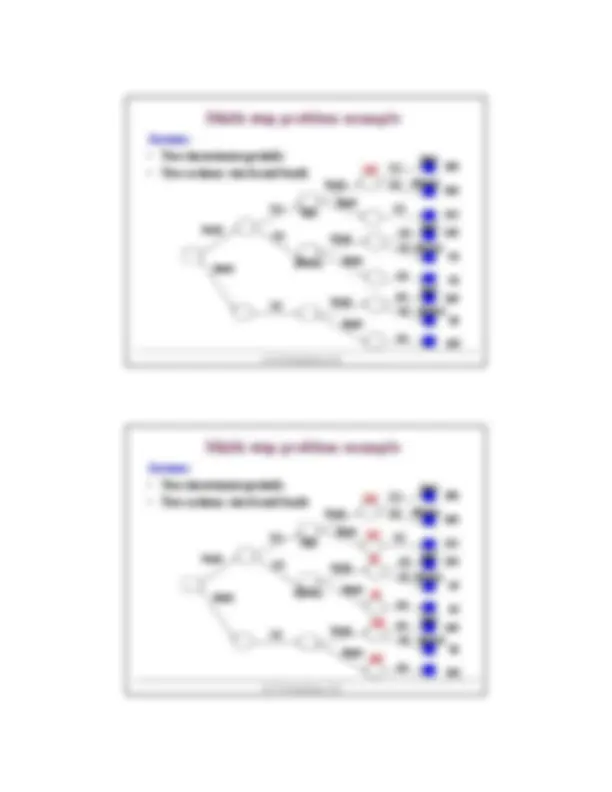
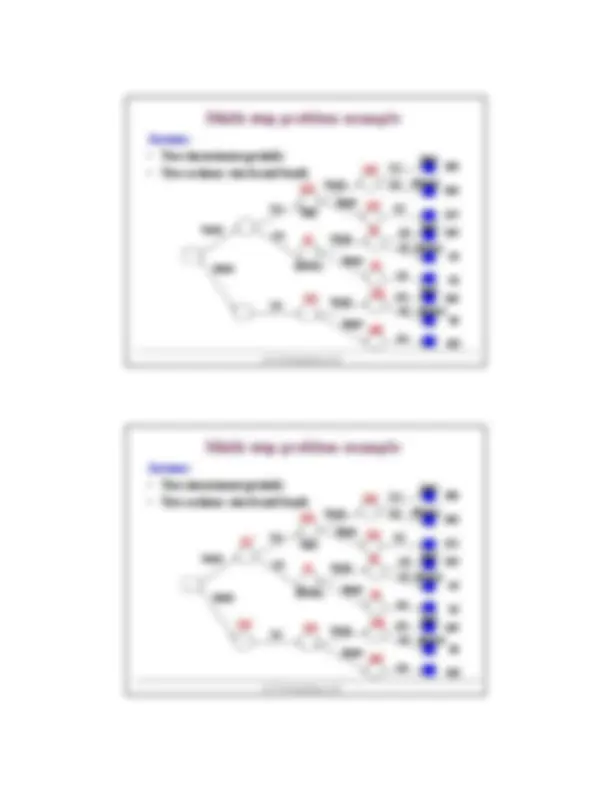
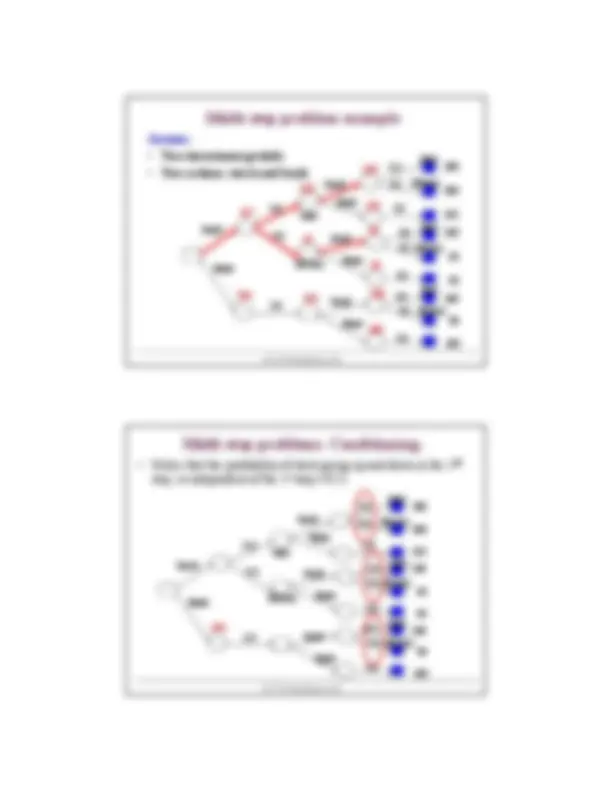
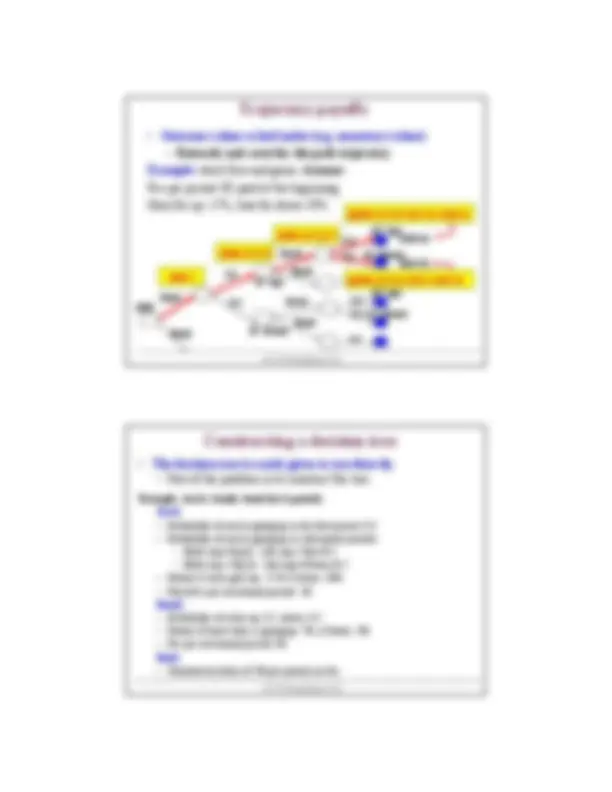


Study with the several resources on Docsity

Earn points by helping other students or get them with a premium plan


Prepare for your exams
Study with the several resources on Docsity

Earn points to download
Earn points by helping other students or get them with a premium plan
Community
Ask the community for help and clear up your study doubts
Discover the best universities in your country according to Docsity users
Free resources
Download our free guides on studying techniques, anxiety management strategies, and thesis advice from Docsity tutors
A lecture note from cs 2710 foundations of ai course at carnegie mellon university, covering decision making in the presence of uncertainty. The lecture discusses the concept of expected values and decision trees to quantify the goodness of stochastic outcomes and make decisions for multi-step problems.
Typology: Lab Reports
1 / 18

This page cannot be seen from the preview
Don't miss anything!











CS 2710 Foundations of AI
Decision making in the presence of uncertainty
Decision-making in the presence of uncertainty
CS 2710 Foundations of AI
Decision-making in the presence of uncertainty
Decision making example.
Stock 1 Stock 2
Home
(up) (down)
CS 2710 Foundations of AI
Decision making example.
Stock 1 Stock 2 Bank
Home
? (up) (down) (up) (down)
Decision making example.
Bank 1.0 101 Home 1.0 100
CS 2710 Foundations of AI
Decision making. Deterministic outcome.
Bank 1.0 101 Home 1.0 100
Decision making. Stochastic outcome
Stock 1
Stock 2 Bank 1.0 101
(up) (down)
CS 2710 Foundations of AI
Stock 1
Stock 1 Stock 2 Bank
Home
(up) (down) (up) (down)
CS 2710 Foundations of AI
Expected values
Stock 1 Stock 2 Bank
Home
(up) (down) (up) (down)
Expected values
Stock 1 Stock 2 Bank
Home
(up) (down) (up) (down)
CS 2710 Foundations of AI
Expected values
Stock 1 Stock 2 Bank
Home
(up) (down) (up) (down)
Selection based on expected values
Stock 1 Stock 2 Bank
Home
(up) (down) (up) (down)
CS 2710 Foundations of AI
Relation to the game search
Stock 1 Stock 2 Bank
Home
(up) (down) (up) (down)
(Stochastic) Decision tree
Stock 1 Stock 2 Bank
Home
(up) (down) (up) (down)
CS 2710 Foundations of AI
Multi-step problem example
Stock
Bank
0.5 (up) (down)
(up) (down)
(up) (down)
(up)
(down)
Stock Bank Stock Bank
Stock Bank
Multi-step problem example
Stock
Bank
0.5 (up) (down)
(up) (down)
(up) (down)
(up)
(down)
Stock Bank Stock Bank
Stock Bank
CS 2710 Foundations of AI
Multi-step problem example
Stock
Bank
0.5 (up) (down)
(up) (down)
(up) (down)
(up)
(down)
Stock Bank Stock Bank
Stock Bank
Multi-step problem example
Stock
Bank
0.5 (up) (down)
(up) (down)
(up) (down)
(up)
(down)
Stock Bank Stock Bank
Stock Bank
CS 2710 Foundations of AI
Conditioning in the decision tree
Stock Bank
(2 nd^ up) (2nd^ down)
(2 nd^ up) (2 nd^ down)
(1st^ up)
(1st^ down)
Stock Bank Stock Bank
Multi-step problems. Conditioning.
140
105
(2 nd^ up) (2 nd^ down) (2 nd^ up) (2 nd^ down)
(1 st^ up)
(1 st^ down)
140 80 105
80
Stock Bank Stock Bank
Bank
Stock
(2 nd^ up) (2 nd^ down)
(2 nd^ up) (2 nd^ down)
(1 st^ up)
(1 st^ down)
200
130 60 90
100 125
Stock Bank Stock Bank
CS 2710 Foundations of AI
Multi-step problems. Conditioning.
Bank
(up) (down)
(up) (down) (up)
(down)
(up)
(down)
Stock Bank Stock Bank
Stock Bank
Bank
Multi-step problems. Conditioning.
Bank
(up) (down)
(up) (down) (up)
(down)
(up)
(down)
Stock Bank Stock Bank
Stock Bank
Bank
0.4x0.4+0.6x0.5=0.